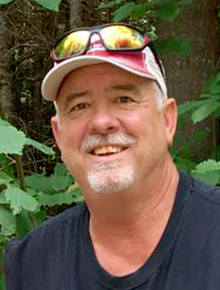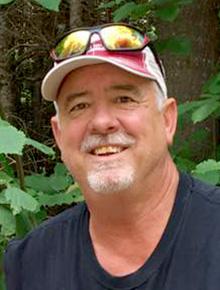
It is mid-August and the past several free days and evenings have been spent doing public lands habitat improvements. These improvements have been in the way of spraying a leaf application brush killer on volunteer trees that for all practical purposes pollute grassland ecosystems. One tree here or one shrub there provides no wildlife value. In fact, they actually reduce the habitat quality and reduce the parcel’s wildlife-carrying capacity.
Carry capacity is the numbers of game, fish and wildlife species that inhabit any particular parcel. It took me many years to prove my public land’s worth to get this permission to do free work for the Minnesota DNR. The department cannot just allow anyone to step in independently to help, no matter how good their intentions are. This has to be done right and at the right time.
I don’t know exactly when my passion for public lands began, but these acres, no matter what state they happen to be located in, now dominate my passion, heart, soul and most of every minute of free time I have.
When I was a young man in my 20s, all I did was fish. I fished almost every day and the reason I fished and not hunted is that I did not need anyone’s permission to do so. I could fish on any one of hundreds of the state’s public waters. My 16-foot Alumacraft boat with a 30-year 9.9 horsepower Evinrude was just as successful at casting docks and catching fish as anyone else’s $50,000 Ranger. Fishing was a poor man’s sport and I was a poor man.
Hunting, on the other hand, meant you needed permission. This also meant the guy with the most money always won. Hunting spots for pheasants were non-existent. Literally non-existent. I became aware of Pheasants Forever because they had bought a parcel of land and opened it to public hunting. I joined the committee of the local chapter back in 1986.
There are now 43 parcels of land purchased by the local PF chapter to hunt on in my county. I can’t count the number of times people have come up to me and said that if it weren’t for Pheasants Forever, I would not have anywhere to hunt.
Public lands – I call them citizen-owned lands – only account for two percent of the land base in Nobles County and are the only place for the common guy or gal to hunt. When it comes to publicly accessible hunting lands, the majority of the non-hunting public is unaware public lands even exist. Those that use them appreciate them and other people hate them because they could be another row of corn or beans.
When I stand in the tall grass on public land and listen to the birds and other creatures, all the way down to the cricket I feel immersed, like I am the only human on the planet. That sense of being part of nature instead of trying to control it is like no other. Wildlife habitat is rare and valuable. There is as much going on underground as there is above ground. Native plant roots that reach a depth of 19 feet survive droughts that no man-created seed ever could.
For all the creatures that live in grassland eco-systems, the average person is only aware of about 5 percent of them. Organisms that rely on plant diversity and great soil health live nowhere else. Many native prairie plant species cannot survive in the soils we now cultivate. Only after the ground has been left untilled for 15 years can the soil health regain the bacteria and enzymes necessary to allow germination to happen.
Wildlife habitat is not easy. You can’t plant it and walk away. If you want deep quality wildlife habitat, you have to want it bad. This means time, effort and tons of energy expended from planting until you die and someone else takes over. There is no effort that I aspire to greater than my love of great habitat on public land. Fishing is now a once in a year deal with my son for a special trip. I see habitat destruction everywhere I go. Humans are pretty good at that.
Every time I see a grassland song bird called a bobolink, I silently ask myself, if not for conservation efforts where would he live? The answer is they would not exist at all. Given a place to be, wildlife can enrich our lives and light fires in our souls.
My burning desire to create more public habitat and manage the habitat that currently exists is an almost singular mission. I receive a sense of oneness I can only experience while sitting on a hill watching the sun go down, petting my dogs and knowing I did all that I could to preserve God’s creatures. You should try it; it might very well change the direction of your life.



